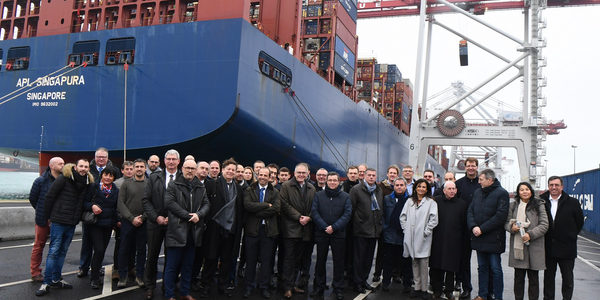Ships go on the grid to clear the air

On many of today's containerships, the engines run virtually 24/7—whether it's the main engine that propels the vessel through the seas or the diesel auxiliary engines that supply power for light, pumps, and refrigeration systems during port stays. While those auxiliary units allow ships to shut off their main engines for a time, they're hardly an eco-friendly alternative. They still generate greenhouse-gas emissions—a problem the maritime industry is trying to address through measures like its "IMO 2020" rule requiring the use of cleaner-burning fuels.
In a bid to curb those emissions, the container giant CMA CGM Group and France's Port of Dunkirk recently launched a "cold ironing," or shoreside power, system that allows ships at berth to plug directly into an onshore electricity supply and shut down their engines completely. The program, which advocates say will reduce air and noise pollution as well as the vessel's bunker-fuel consumption, is similar to one now in place at California's Port of Oakland.
Dunkirk contracted with a consortium called Actemium to design and supply a cold-ironing system that fits into six 40-foot shipping containers, converting power from the local public electricity supply for use by ships. The French port's system has a capacity of eight megawatts—enough to power nearly 1,000 homes.
The first vessel to use the system was CMA CGM's APL Singapura, which plugged into the cold-ironing facilities at Dunkirk's Terminal des Flandres in early January. The system will become fully operational during the first half of this year, CMA CGM says.
After two years of hard work the CMA CGM Group is now fully compliant with the #IMO2020 Low-Sulphur regulation, but what does it mean exactly?
— CMA CGM Group (@cmacgm) January 10, 2020
All the answers right here > https://t.co/X5ffsCjVSb pic.twitter.com/EuJlyYcTMf
Related Articles
Copyright ©2024. All Rights ReservedDesign, CMS, Hosting & Web Development :: ePublishing